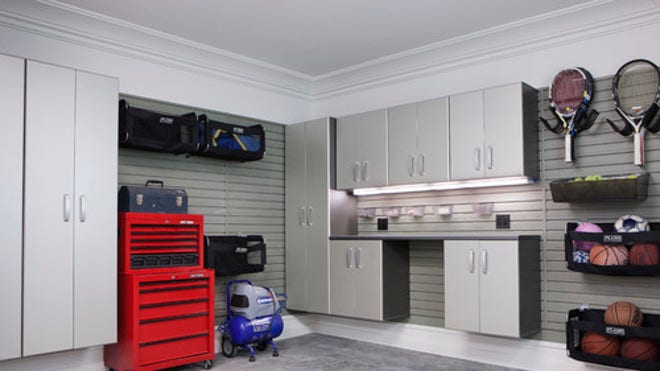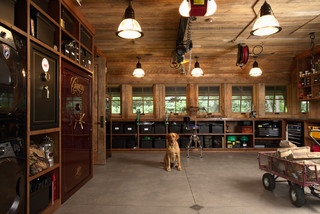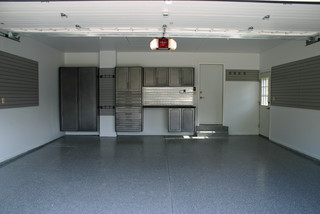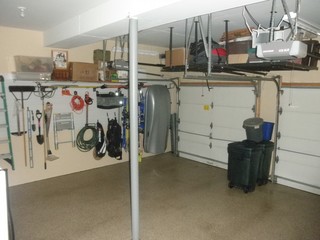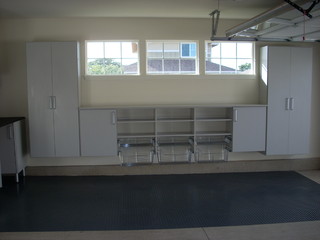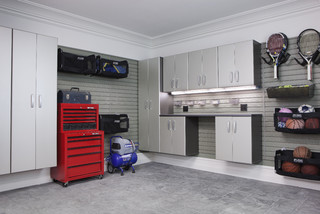2. Fix a leaking roof. During winter, it's common to patch or tarp a roof as a temporary fix for leaks, but now is the time to resolve issues for good. According to the 2015 Houzz & Home study, which had more than 170,000 respondents in the U.S., homeowners are nearly two times more likely to remodel their kitchen (27%) than roofing (15%), an important update when needed. "Fixing leaks and maintenance repairs should be prioritized ahead of other remodeling," Sitchinava says. "Leaks can cause problems like pests and mold. Often these repairs are also lower budget and require less planning."
4. Clean and repair gutters. Winter debris can build in gutters, and it's important to remove it before spring rains. To avoid water running down the side of your home, check for places where the gutters may have pulled away from the house. "Termites and other pests, which become most active during this time of year, are attracted to moisture," Sitchinava says. "Standing water can create mold issues and cracks in driveways and paths create tripping hazards."
5. Clean siding. Similar to your entry or mudroom, salt and mud can build up on the exterior of your home during the winter. Depending on the type of siding, you can use a hose or pressure washer to clean your siding.
6. Update paths and your driveway. Often driveways and paths crack during the winter, especially in regions that experience freezing conditions. During landscaping projects, more than half of homeowners update their paths (51%) and 17% update their driveways, according to the 2016 Houzz Landscaping Trends study.
"Often, it's not an option to resolve these issues during the winter because it's too cold to have workers on site and there may still be snow on the ground in colder climates. So, it's important to address them ASAP in the spring."
To order your copy of Remodeling Hell, CLICK HERE
For more information about Remodeling Hell, CLICK HERE
For more information about the Summit Murder Mystery series, CLICK HERE
Follow me on TWITTER
Friend me on FACEBOOK
Follow me on PINTEREST













